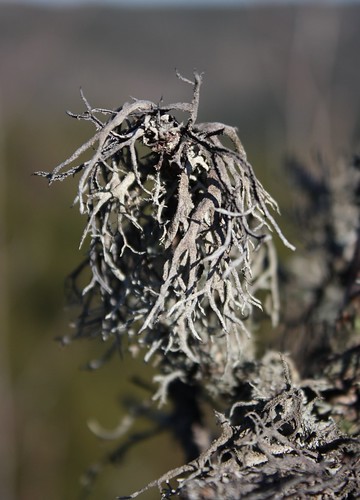The Boy who Cried Wolf
The Boy who Cried Wolf, originally uploaded by bris1969.
Rather than let panic rule my actions, reactions and emotions, following the Perfume Shrine's intelligent commentary on the supposed threat on oakmoss and perfumery as we know it, as well as personal correspondence from Helg for an official statement, I decided to visit again one of my favourite websites - IFRA.org, to check out the status on Oakmoss. I also immediately contacted my suppliers to see if they know of any change in the supply of oakmoss in the near and not so near future.
As of the end of last year, neither of my oakmoss suppliers were no longer carrying complete oakmoss absolute. The sensitizing elements were removed, as per IFRA's regulations. Which is not surprising, since oakmoss is grown and harvested in the EU (mostly in former Yugoslavia), and most of the perfume industry at large is still concentrated on that continent. To my pleasant surprise, even at this manipulated state, oakmoss still presented the full spectrum of performance it always had, and was just as good as ever for creating chypres, fougeres and adding nuances to florals, orientals and citrus (oakmoss, in case you didn't know, is used in all fragrance categories for both its fixative qualities, and its fragrance profile - adding a dry, salty, mossy, earthy and edgy nuance to any composition) and having a powerful diffusiveness.
According to IFRA's "Fragrance Material Specifications" on the Oakmoss pages in the 43rd amendment:
"Oak moss extracts used in fragrance compounds
must not contain added tree moss, which is a source of resin acids.
Traces of resin acids may be carried over to commercial qualities of oak moss in the
manufacturing process. These traces must not exceed 0.1% (1000 ppm) dehydroabietic
acid (DHA) in the extract.
The concentration of resin acids in oak moss can be measured with an HPLC Reverse
Phase – spectrofluorometry method.
Further, levels of atranol and chloroatranol should each be below 100 ppm in oak moss
extracts".
Another interesting point is, that oakmoss was last reviewed in 2008, and the next review date is scheduled for 2013. If IFRA is planning anything drastic for changes in oakmoss regulations in 2010, they surely aren't saying anything about it on their 43rd ammendment.
For all I know and care, oakmoss will still be in production and in use by the perfume industry at large at least until 2013, although its designation as a restricted substance (meaning: for many applications oakmoss canbe only used in 0.02-0.1% concentration, depending on if it's used for products that have skin contact or not). While this certainly has implications on the economy of oakmoss production, making harvesting and distilling less feasible - this is not the end of this building block as it is still so widely in use (even if to a lesser concentration), and it's importance indispensable. And since I don't live in Europe, I intend to keep using oakmoss the same way I've always have. This is the least I can do to support the oakmoss distillers and to ensure that they can keep producing oakmoss absolutes and that entire families of fragrances will not be erased from the face of the earth.
What I found may be enough to comfort you oakmoss lovers (and chypre and fougere wearers in particular); but as much as I agree with the author this time (and this it would have been a great response IF indeed oakmoss levels were to be further lowered next year) - also leaves one with puzzlement about the motives for posting such doom and gloom claims in a magazine. Bad news do sell more papers though I heard.
Or perhaps, just like in the story about the boy who cried wolf, eventually no one will listen and that's when oakmoss will quietly disappear? I will leave this to the conspiracy theorist to figure out.
Evernia prunastri (Oakmoss lichen) (?), originally uploaded by OK Thomassen.
Labels: IFRA, Oakmoss, Regulations





6 Comments:
Hi Ayala! I'm so glad to see you are using and liking the new low atranol oakmoss too. I just posted about this last night on my blog, and I've mentioned it several times before. The new part of the oakmoss regulation is the atranol/chloroatranol level (most people already conform to the usage levels), and the low atranol moss seems nice to me too. I'm grateful to have it because it is natural and has a true moss character unlike the synthetics I've tried. I've not seen this moss mentioned by anyone else before and was wondering if others were using it, so I'm glad to hear you are! (Of course that makes sense since your perfumes are all natural, but I wasn't sure if anyone else had switched over to it yet.) --Laurie
Laurie,
Thank you so much for posting!
I love oakmoss and don't want to ever need to do without it.
When I first heard that it had some components removed I was very suspicious; I was pleasantly surprised to find that most of the essential characteristics of oakmoss were preserved. I haven't seen the removal of atranol/chloroatranol discussed anywhere yet.
I haven't smelled any synthetic mossy compounds or molecules on their own before but I haven't heard there is one that can truly replace real oakmoss as of yet.
I hope that one day the EU will just drop down the whole issue. It's ridiculous and unreasonable in more ways that I can begin to count! Labeling could so easily solve the issue. But maybe we are overestimating consumers' intelligence?!
Hello Ayala,
I just emailed you regarding this issue. Didn't realize you had this post about it.
Stopped by to wish you Happy Passover as well!
Hugs,
Trish
Happy Passover, Trish!
Thank you for your email and commenting here. It is an ongoing issue, nothing really new, but it keeps getting worse.
There will be another post here in the very near future clarifying a few other things (I did finally hear from all of my suppliers and other experts in the field) and it would be good to have a re-cap of the topic here in SmellyBlog.
Thanks Ayala. You inside placed the subject of the reality with concrete information.Kiss. Elisabeth
As a chypre lover I intend to sign any petition relating to the issue - there is one at cropwatch for instance. There seem to be a lot of politics involved, though, that I don't understand -do big commercial fragrance makers support the IFRA so they can save money? The laws seem to have more impact on niche fragrances, which I gladly spend an arm and leg on =) But then again, what about Chanel no. 5? It's pricey, and a classic - a severe reformulation will not be good business for the house of Chanel. Well, signing petitions and letting my fellow chypre lovers know about the laws is the best I can do =) Cheers.
Post a Comment
<< Home